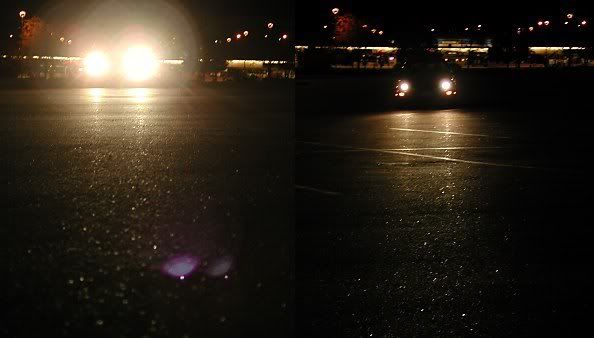APT wrote:
Stefonius wrote:
You're happy with 5000 Kelvin color temperature, but everyone else on the road with you is unhappy for miles after you encounter them.
I cannot say if my vehicle's lights bother you, just like you cannot say they bother "everyone else one the road". It seems that drivers today have not problems flashing their bright lights when oncoming vehicles lighting bother them. I'll stick with that feedback. If they are too bright or aimed poorly, I'll be warned - repeatedly.
For proper night vision, headlights should be in the 3200-3500 Kelvin range.
Why? Site sources.
I wished I had "sources" to validate the claims but I don't.
What I can tell you, from my own experience with light bulbs..
Years ago, I was wanting add a little more light in my garage.. So I bought a handful of 27W "daylight" CFLs which are 5000K temp to replace 23W Warm White (3500K) CFLs..
One would think that a 27W bulb would be a bit brighter than a 23W bulb.. right?
No, the 27W 5000K CFLs are DIMMER than the 23W 3500K CFLs :h :M
I am not the only one that noticed that.. my DW and DD along with my Dad and every other person that has been in my garage..
Spent a lot of money on those 5000K bulbs so I put up with them but as they die I am replacing them with 3500K bulbs..
I suspect with incadescent head light bulbs they are TINTING the bulb BLUE to "filter" out some of the yellow and other colors (you need red, green, blue in the proper proportion to get "white" light)..
When you FILTER, you BLOCK the other light that doesn't match the color of the filter. This results in LESS light output, the blue tinted bulbs compensate by making the filament draw MORE CURRENT.. It is a nasty cycle of losses.
It is very difficult (if not impossible) to get incadescent lights up to 5000K without the blue tint.
Technically they are WASTING a lot of light by filtering..
On edit..
I also wanted to add an additional observation from my experiences with 5000K CFLs..
In my garage I notice much more harsh "shadows".. it is if the higher K light does not "bend" or fill in around objects as well as lower K temp lights..
This makes working on vehicles even more troublesome than before..
Applying that bit of knowledge 5000K headlights would make it even more difficult to spot objects like deer beside the road if they happen to be near trees or light brush..
I have personally taken out 4 deer over the last 15 years and avoided dozens more.. I can tell you this they pop out of the shadows much faster than you can react.. I would not want my headlights throwing dark shadows out there that's for sure.
 e-code
e-code


